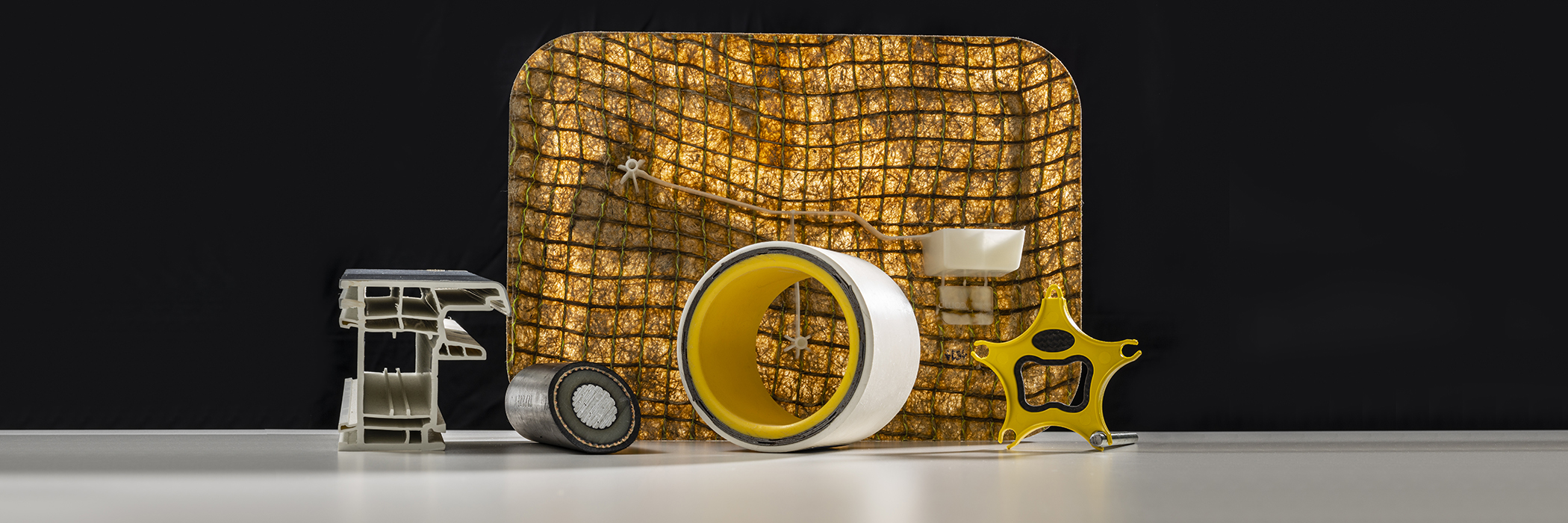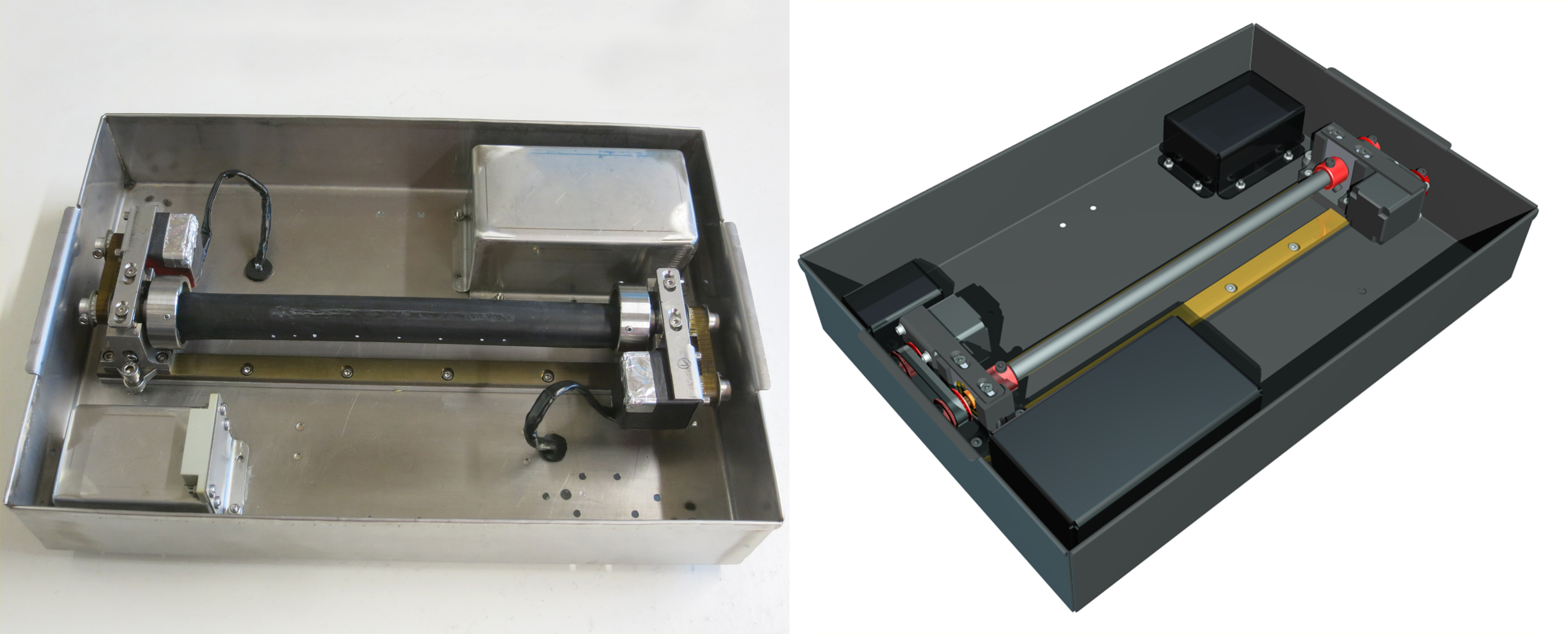Improving surfaces with electrons
The composition of a cable material is predetermined by the intended application. However, there are still many possibilities for improvements on the cable surface. Tailor-made proper-ties can be set with "e-grafting" and "skin-crosslinking".
By irradiating with low-energy electrons, functional molecules can be anchored on polymer surfaces ("e-grafting") or tailored properties can be set by targeted crosslinking of the surface ("skin-crosslinking"). In a project funded by Innosuisse with our partners HUBER + SUHNER AG and COMET eBeam Technologies, these processes were developed for various applications and the modified cable surfaces were thoroughly tested.
COMET's EBLab 200 offered ideal conditions for experiments with low-energy electrons on a laboratory scale. While the irradiation of flat samples is possible as standard, a special sample holder had to be designed for the irradiation of real cable samples. In particular, a device for clamping and rotating the cables had to be implemented in the smallest possible space, which is operated autonomously, without wiring to the outside. The radiation resistance of the materials used as well as the remote control through the lead jacket of the EBLab were further challenges that our project engineers mastered.
As the project progressed, it became apparent that the "e-grafting" strategy was not effective in achieving the desired property improvements. By means of "skin-crosslinking", however, solutions could be found for various problems:
- When unwinding heavy cables, damage to the surface repeatedly occurs without pre-treatment when bonded areas are torn open. The stickiness of cable materials could be extremely reduced by cross-linking the outermost layer of the cable by means of electron irradiation.
- The abrasion resistance of thin cables is critical for various applications and is determined in a rigorous testing procedure. Here, too, irradiation led to a significant improvement.
- To achieve sufficient adhesion of seals to the finished cables, complex pre-treatments were needed in the past. Electron irradiation resulted in a significant improvement in adhesion between the seal and the cable. A single step in the pre-treatment was sufficient and critical chemicals were not even used.
At HUBER + SUHNER, cables are routinely cross-linked with high-energy electrons during production. The facilities for radiation protection (bunkers) as well as the know-how in handling electron beam sources are already in place. It is therefore currently being examined whether, based on the promising project results, the existing irradiation facilities will soon receive reinforcement from low-energy electron beam sources. This step would open the way to better surfaces.
We would like to express our sincere thanks to HUBER + SUHNER AG and COMET eBeam Technologies for their excellent cooperation and trust. The FHNW team included Elias Rehmann, Sebastian Wollmann, Michael Grob, Karolina Sroka, Per Magnus Kristiansen and Sonja Neuhaus.

